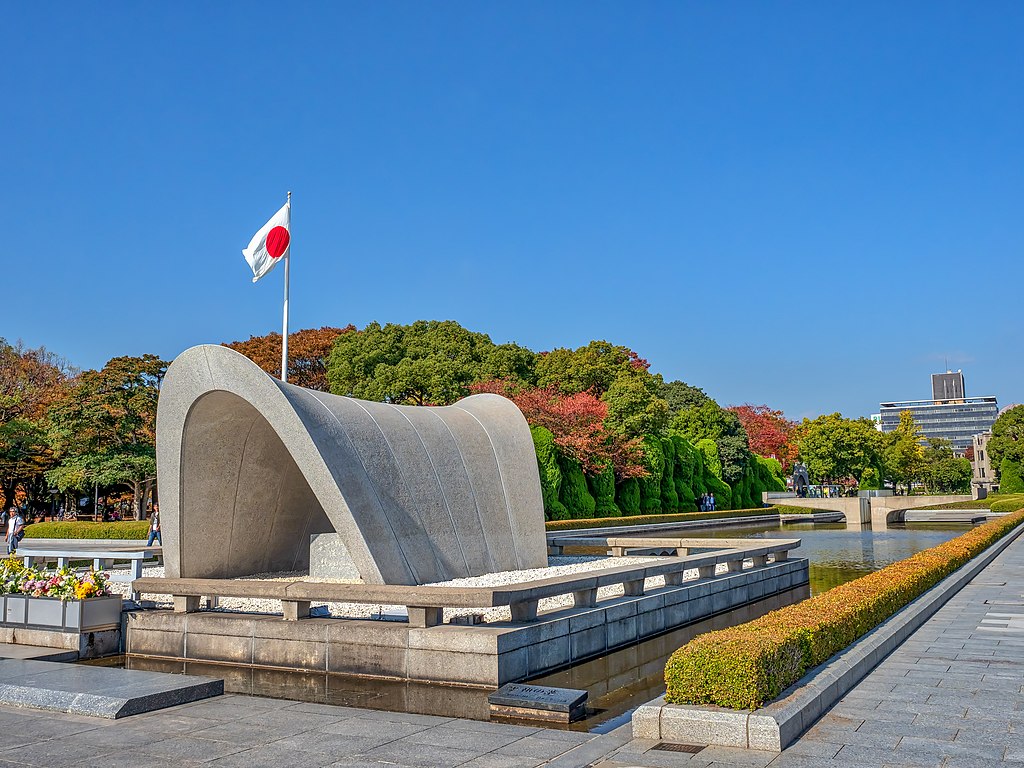Nov 29, 2022
Highlights of the Peace Memorial Park in Hiroshima
The Peace Memorial Park is not only the most visited site in Hiroshima but also one of the most important places in Japan. More than a million people visit the park yearly to commemorate those lost in the nuclear attack. The site for the park was chosen because it was the target of the bomb, and at the time, this was the city’s commercial hub. A park was created instead of rebuilding the area in a commitment to peace. The more than 120,000 square meters are made up of green space, walking paths, and several highlights.
Peace Memorial Museum
The park has three museums, but the Peace Memorial Museum is the main one. Most of its exhibitions focus on what happened on the day of the bombing. However, there is also information about the events leading up to the attack, including the part Hiroshima played in the war. A large number of personal artifacts and stories are a reminder of the impact the bomb had on individuals.
The Central Cenotaph
A short distance from the museum is the central cenotaph, the official site to remember the victims of the bombing. It is an arched tomb containing a stone chest with a register of the names of all who died directly due to the impact of the bomb and from radiation exposure. In total, there are more than 220,000 victims.
National Peace Memorial Hall
One of the other museums is the Hiroshima National Peace Memorial Hall for the Atomic Bomb Victims. It displays temporary exhibitions that focus on specific groups of victims. You can also attend reading sessions of memoirs and watch video testimony footage from survivors.
A-Bomb Dome
What remains of Hiroshima Prefectural Industrial Promotion Hall is commonly called the A-Bomb Dome. A few buildings were left partially standing after the bomb, with this one being the closest to the hypocenter. It is now a UNESCO World Heritage Site.
Rest House
Another building that withstood the bombing to some extent is called the Rest House of Hiroshima Peace Park. The bomb caused the roof to collapse and destroyed everything inside, taking 36 lives. However, there was one survivor: Eizo Nomura, in the basement, where he was protected by a concrete roof (although he still suffered many radiation symptoms).
The Rest House was renovated after the war and later purchased by the Hiroshima municipal government. There has been much debate over whether the government should continue to maintain it; in fact, the building was almost demolished in 1995. However, it remains preserved to this day and is now used as a tourist office, souvenir shop, and administrative offices.
Children’s Peace Monument
The Children’s Peace Monument commemorates the children who died due to the bombing. The top of the statue features Sadako Sasaki, a girl who died of radiation poisoning. She is depicted as lifting a crane as she was attempting to make 1,000 origami versions of the bird when she died.
If you’re in Hiroshima, you must visit the Peace Memorial Park. Knowing what to see there will ensure you make the most of your time.
Dumphasizer, CC BY-SA 2.0, via Wikimedia Commons


About the author